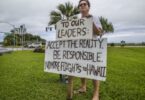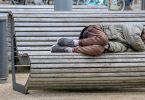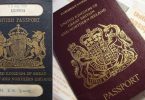Riots, protests, and uncontrollable situations in regards to COVID-19 are a reality in many cities in the United States of America these days.
There is a shining star within the USA – it’s the Aloha State of Hawaii and its capital city of Honolulu.
Honolulu is located 2,560 miles from the US mainland and is home to Waikiki Beach, one of the most famous tourist resorts in the world. Visiting Hawaii will again be possible as of October 15 for anyone getting a negative COVID-19 test within 72 hours before getting on a flight.
United Airlines among others will increase frequency from the US mainland to Hawaii, and many hotels and resorts are reopening ready for business. The privately run Hawaii Tourism Association teamed up with WTTC and rebuilding.travel and is offering businesses the Safe Travels Stamp and the Safer Tourism Seal to encourage businesses to communicate their compliance with policies. 
In Hawaii, there are no riots, no police killings, and the worry is focused on taking care of each other. This Aloha Spirit is in the genes of the US citizens residing in this beautiful state many call paradise. Hawaii is unique in a lot of different ways. During the epidemic, the spread of the virus had its ups and downs, but wearing a mask and calmly facing the enemy of the virus was never a problem. This allowed Hawaii to take national leadership in so many ways. Hawaii has a sliding scale when it comes to opening or closing due to COVID-19. It may be the first system in the world allowing to open and close based on an approved checklist of circumstances. Currently, Hawaii just entered Tier 1 of the reopening after a 4-week lockdown period on the island of Oahu.
The four tiers are:
Tier 1 — representing a high level of community spread that is testing the limits of the public health system to test, contact trace, and isolate/quarantine; and puts some strain on the healthcare system.
Tier 2 — representing a level of community spread that is substantial, but still allows the public health system to adequately test, contact trace, and isolate/quarantine; and does not overburden the healthcare system.
Tier 3 – representing a moderate level of community spread that allows the public health system to fully test, contact trace, and isolate/quarantine; and does not overburden the healthcare system.
Tier 4—representing a low level of community spread that is easily handled by the public health system and the healthcare system.
Click here to read what these tiers mean for residents and visitors. The news about riots in Kentucky or Oregon on an interactive map of police brutality put up by the ACLU in Massachusetts, along with killings and widespread demonstrations seem to be coming from a world apart in Hawaii.
Today, a proud Mayor of Honolulu, Kirk Caldwell, discussed the status of the City’s Provisional Outdoor Screening and Triage (POST) program which started in April to mitigate the spread of COVID-19 among Oahu’s homeless population. COVID-19 took over the island of Oahu, but not the efforts of Major Lambert from the Honolulu Police Department who worked with his team of dedicated HPD officers to better the situation of the large homeless population in putting up tents, organizing 3 meals a day, COVID testing, and medical care for hundreds of homeless people on the island. Many who stayed at these facilities now enjoy permanent housing – and all of this in the middle of a devastating pandemic.
Mayor Caldwell praised the love and compassion of the men in blue under the most difficult circumstances. The Mayor said: “HPD could have walked away saying its not our problem, but they faced this and took ownership of the problem and made such a difference in so many lives.”
On October 15, the State of Hawaii will be reopening to tourists with visitors. Travelers who upon entry into the state and provide written confirmation from a state-approved COVID-19 testing facility of a negative test result from a test administered to the traveler within 72 hours from the final leg of departure, will be exempt from the mandatory quarantine. The inter-island quarantine for travelers arriving in the counties of Kauai, Hawaii, Maui, and Kalawao (Kalaupapa) remains in place. However, the proclamation empowers the counties to adopt a negative test exception process for travelers subject to the inter-island travel quarantine.
Click here to listen to a podcast with Mayor Caldwell today answering a question by eTurboNews on why Hawaii is so different in so many ways from the rest of the country.























